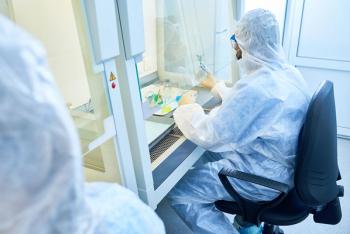
The Importance of Building in Flexibility and Commercial Viability Early in the CGT Scaling Process
Key Takeaways
- CGT 2.0 emphasizes simultaneous flexibility and scalability to address manufacturing bottlenecks in the rapidly advancing CGT sector.
- Success in CGT requires clinical efficacy, patient access, and affordability, with CMC being crucial for product viability.
At the Cell and Gene Meeting on the Mesa, a panel discussion was held on advanced therapy production and how it demands modular platforms, automation, and data governance to drastically improve patient access and affordability.
At the
Industry leaders convened during the session titled “The New Standard for CGT Manufacturing: Flexibility and Scalability” on Oct. 6 to address this bottleneck, arguing that the industry must transition to a new paradigm—labeled CGT 2.0—that delivers both flexibility and scalability simultaneously (1).
Chaired by
"The idea is to provide flexibility and scalability at the same time, and we're going to talk about how we do that; and that really is a hallmark of what I would call CGT 2.0," Foster said at the start of the panel discussion (1).
What redefines commercial success?
For the biopharmaceutical industry, success in CGTs can no longer be defined solely by clinical efficacy, the panel discussion revealed.
"If you ask 90% of the people in this industry what their end state is, it's a clinically effective and safe product,” Harris said during the panel. “That is one of the pillars, but that is not the only pillar."
Meanwhile, neglecting chemistry, manufacturing, and controls (CMC) early on results in a non-viable product, emphasized
What do platform processes and modular systems bring to the table?
To enable flexibility, AMCs, such as City of Hope, are leveraging platform processes—modular units that are already vetted and can support multiple investigational new drug (IND) applications rapidly. For example, City of Hope uses a few platforms to support 18 INDs, Ahsan pointed out.
What strategies can be used to reduce end-product variability?
A major hurdle for scaling CGT manufacturing is process variability. Even highly trained human operators invariably introduce variation that batch records cannot capture, noted
Simple automation in manual processes is considered "low hanging fruit" for improving quality and reducing costs, Snowden commented. "[One will] see an extraordinary amount of variability because of the subtleties of the execution that can never be put into a batch record or training without them turning into a novel sized document," he explained.
Furthermore, the industry suffers from a significant data gap as it often fails to analyze or share the data collected. Harris explained that OmniaBio, in addressing this data gap, utilized a simple AI platform to analyze human labor and process steps in their operations and identified 27% cost savings in labor, underscoring the immediate financial impact of leveraging basic analytics. The ultimate goal is adaptive control, in which systems use machine learning to guide real-time manufacturing decisions, Harris stated.
What is the benefit of building a collaborative CGT ecosystem?
The panelists concluded that achieving CGT 2.0 requires a profound "mentality shift" from viewing development as a research endeavor to treating it as a commercialization program. Collaboration is paramount to eliminating time-consuming tech transfers, which can currently take 12 to 24 months, the panelists discussed.
AMCs, for instance, must partner with technology providers to offer a "sandbox" environment for rapid iteration and enhancement of new manufacturing platforms, ensuring they are suitable across all patient populations. The panelists agreed that industry players must come together and prioritize what benefits the overall field, rather than individual organizations, which entails promoting data sharing and interoperability. In this way, the entire CGT sector can move toward exponential growth and widespread patient access. The elimination of bottlenecks, identified early through principles such as Kaizen (2) or the Theory of Constraints (3), and optimizing the "last mile" logistics (product delivery to the patient) are also essential to driving down the persistently high cost of goods.
References
1. Cell and Gene Meeting on the Mesa. The New Standard for CGT Manufacturing: Flexibility and Scalability. Presentation at Cell and Gene Meeting on the Mesa, Oct. 6, 2025.
2. Abuzied, Y. A Practical Guide to the Kaizen Approach as a Quality Improvement Tool. Glob J Qual Saf Healthc. 2022, 5 (3), 79–81. DOI:
3. Theory of Constraints Institute.
Newsletter
Get the essential updates shaping the future of pharma manufacturing and compliance—subscribe today to Pharmaceutical Technology and never miss a breakthrough.





